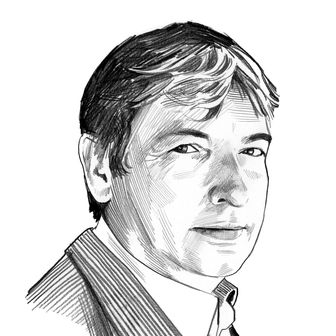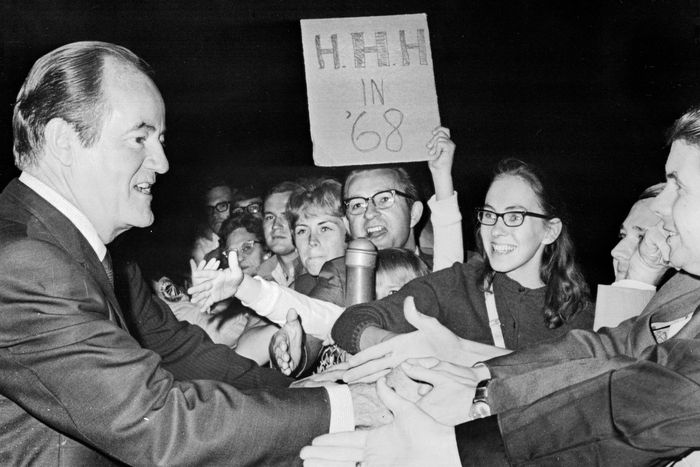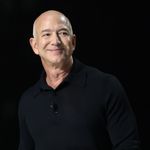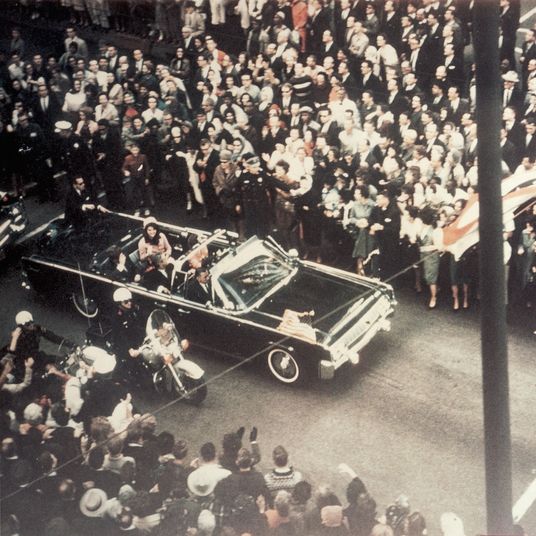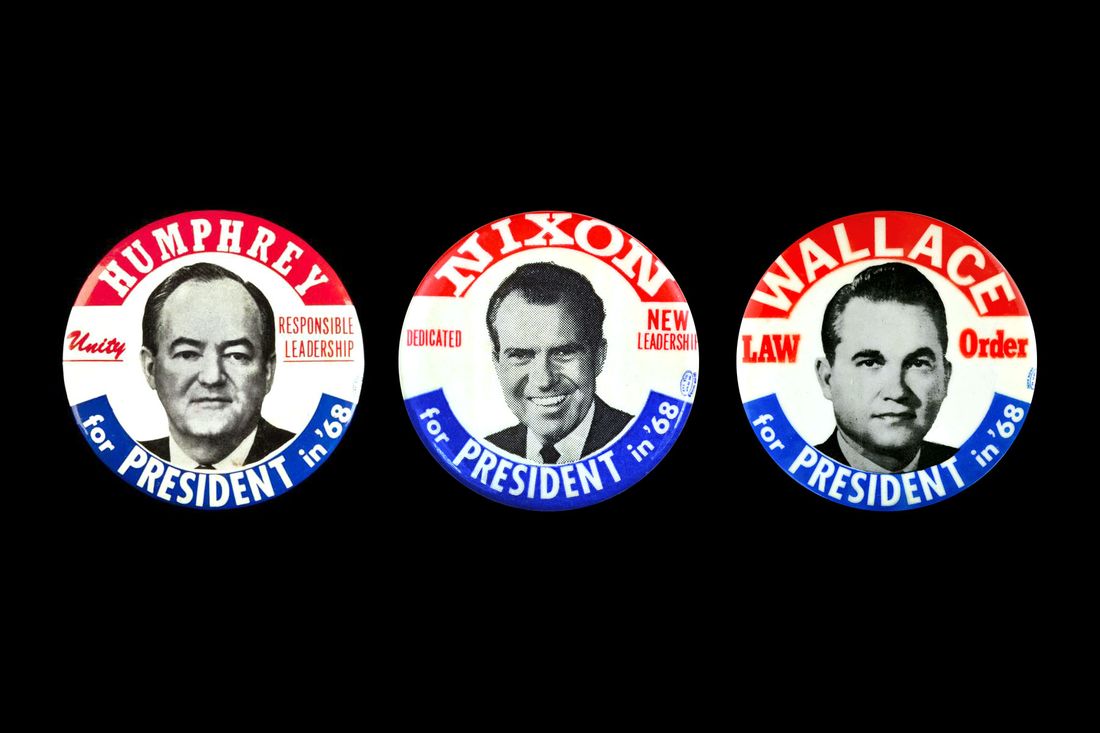
Fifty years ago, Hubert H. Humphrey was in a world of trouble. The vice-president had been nominated as the Democratic candidate for president at a convention that was a political and public relations disaster. He was trailing badly in the polls. His party was deeply — perhaps fatally — divided over the Vietnam War prosecuted by his chief patron, President Lyndon Johnson. And on top of that, he was out of money.
A friend came along to offer a helping hand (as the U.S. Naval War College’s Richard Moss recalled last year):
In 1968, Moscow feared that the staunchly anti-communist Richard M. Nixon would be elected. To forestall that, the Kremlin decided to reach out to Vice President and Democratic presidential candidate Hubert H. Humphrey. As Anatoly Dobrynin, the Soviet ambassador to the United States from John F. Kennedy to Ronald Reagan, revealed in his memoir, “In Confidence,” two decades ago: “The top Soviet leaders took an extraordinary step, unprecedented in the history of Soviet-American relations, by secretly offering Humphrey any conceivable help in his election campaign — including financial aid.”
Dobrynin made the offer personally to Humphrey over lunch. He flatly rejected the idea. It’s unclear who picked up the tab.
Nineteen-sixty-eight was an election year that featured a bit of everything, with a degree of volatility matching the times we are living through today. But it is mostly remembered for the events leading up to a riotous Democratic convention: two assassinations, a wave of deadly and destructive riots, intense presidential primaries, and the North Vietnamese/Viet Cong Tet Offensive that all but eliminated the possibility of an American military victory in Southeast Asia.
Less distinct in the Americans’ collective memory five decades later is the general election contest itself between Richard Nixon and Hubert Humphrey (with independent George Wallace lurking in the near background) — a race that, after shaping up as a complete blowout, became wild, dramatic, and very close in its final weeks. In retrospect, there’s no question that the ‘68 election helped remake American politics. It featured racial dynamics as powerful as those we witnessed two years ago; extreme partisan polarization; the original “October surprise,” along with the aforementioned attempted intervention by the Russian government.
Most Americans who weren’t of age in 1968 may think we are today living through unprecedented trials and traumas. But the election of 1968 anticipated more of them than is often recalled.
The final stage of the 1968 presidential contest resembled the Trump–Clinton battle in significant ways. By the end of September, Richard Nixon had maintained a significant lead for months. Though he’d had his own party unity issues in nailing down the GOP nomination, he faced an opponent with intense intra-party opposition, a funding disadvantage, perceived organizational incompetence, and a miasma of pessimism. Humphrey held little if any allegiance from antiwar Democrats after the Chicago convention with its angry cops clubbing peace demonstrators and reporters alike. And he was losing millions of ancestral Democrats as well to the racist demagogue Wallace, whose southern base was bolstered by white working-class voters in many industrial states.
A late September Gallup poll showed Humphrey with only 28 percent of the vote, just 7 percent more than Wallace, 15 points less than Nixon — and not even half of the percentage won by LBJ.
But, in the phrase of political historian Theodore White, “old political patterns that had seemed a few weeks ago to be utterly torn, slowly, instinctively reasserted themselves” in the month of October 1968. Since Democrats had built an enormous majority just four years earlier (Johnson defeated Goldwater by a 61–39 popular vote margin, and carried 45 states, including some that rarely abandoned the GOP), the return to old partisan habits mostly benefited Humphrey.
Still, it required a number of intersecting developments to change the 1968 presidential election from a catastrophe for Democrats into a barnburner. The Humphrey campaign itself made some important if overdue moves to restore party unity. The Wallace campaign that had been eating away at Humphrey’s union base lost its fearful momentum. The Nixon campaign played it safe and tried to run out the clock. And objective events, particularly those involving the Vietnam War, played a role in tightening the election as well.
Humphrey’s Antiwar Turn
At the very nadir of his campaign, on September 30, Humphrey finally broke from the president, making a nationally televised speech in Salt Lake City calling for a unilateral halt to U.S. bombing of North Vietnam, even though shadowy negotiations between his own administration and the Hanoi regime were under way. LBJ was not pleased. But instantly Humphrey’s campaign started getting small-dollar campaign donations, and the antiwar demonstrators that had hounded his appearances on the stump vanished or even began cheering him.
More importantly, the candidate and his campaign were transformed, as 1968 historian Michael Schumacher noted in his book The Contest:
“It liberated him internally,” [Humphrey adviser] Ted Van Dyk told Albert Eisele, author of a dual biography of Humphrey and McCarthy. “The American voter watching the screen that night finally saw that Humphrey was for peace, that he was sincere, and that he meant it. On that night, the onus of the war shifted to Nixon.”
“He was a new man from then on,” Lawrence O’Brien declared. “It was as if a burden had been lifted from his shoulders. And the impact on the campaign itself was just as great.”
And as historian Michael Cohen observed in his book American Maelstrom, the speech was also a turning point for a Democratic Party that had often been as or more hawkish than Republicans in the fight against communism. Once marginalized, antiwar Democrats weren’t just brought into the fold, they became the primary shapers of Democratic foreign policy:
For much of the previous year Democratic mandarins had sought to marginalize antiwar voices in the party by refusing to allow their views on Vietnam to shape policy or political decisions. By the fall of 1968 that position was no longer tenable. The antiwar faction had become too vocal, their advocacy too significant, and their influence in the party simply too potent to be ignored…. From that point forward, they, not the hawks, would dictate the foreign policy direction of the Democratic Party. [Eugene] McCarthy had dealt the first blow, but in a very real sense, the Cold War bipartisan consensus died in Salt Lake City on September 30, 1968.
It was much like the accommodation of Bernie Sanders supporters that the Hillary Clinton campaign executed in the 2016 general election. It didn’t win the election then, either, but like the loud-and-proud progressives that are playing so central a role in the 2018 midterms, the antiwar Democrats after 1968 were never outcasts again, at least until September 11, 2001.
The Wallace Meltdown
Former Alabama governor George Wallace entered the 1968 presidential campaign as the fiery embodiment of a backlash to the Democratic Party’s decisive commitment to desegregation, reflected in LBJ’s successful championship of the Civil Rights Act of 1964 and the Voting Rights Act of 1965. In 1964 Wallace had proved that this backlash was not limited to the South by running in Democratic presidential primaries in three states north of the Mason-Dixon line and winning larger-than-expected minorities of the vote. He chose the independent route in 1968, hoping to deny both major-party candidates an Electoral College majority and giving himself and other southern reactionaries leverage over future civil rights efforts. And as the year unfolded, Wallace showed more strength in polls than any third-party candidate since the Progressive Party’s Bob LaFollette in 1924.
Historians agree that multiple factors fed the steady decline of Wallace’s menacing presence that looked so formidable up until the final month. There was increasingly negative media coverage of his campaign events, and the incitement to violence he regularly offered. There was the natural tendency of minor party candidates to lose altitude as voters realized they couldn’t win (Wallace’s actual strategy — denying Nixon and Humphrey an Electoral College majority, giving the South a big bargaining chip for its regional grievances in an election to be determined in the U.S. House — was too abstract and fanciful to energize actual voters). And then there was an aggressive campaign by the labor movement — still very powerful 50 years ago — to convince their members that Wallace and his state were no friends of the working stiff.
As late as September, polls of factories in the American heartland showed Wallace capturing healthy minorities and even pluralities of the union vote. Labor made minimizing Wallace’s white working-class support the central feature of a massive push on Humphrey’s behalf, as it reminded voters in union households that Alabama was a state hostile to collective bargaining with low wages and terrible economic and social conditions for white as well as black workers.
The Wallace campaign was no match for labor’s organizational muscle. But a final ingredient in Wallace’s meltdown was an entirely self-inflicted wound that killed whatever momentum the fiery little demagogue took into October: the selection of legendary former Air Force General Curtis LeMay as Wallace’s running mate on his American Independent Party ticket — and LeMay’s complete self-destruction at the October 3 press conference that introduced him. Here’s Schumacher’s account in The Contest:
[LeMay] was in trouble from the onset, when he attempted to define his position on nuclear war. “We seem to have a phobia about nuclear weapons,” he began, quickly adding that the best policy of all was to avoid war. But, he went on, if a country was going to engage in war, the country had to be dedicated to ending it as soon as possible.
“Use whatever force that’s necessary. Maybe use a little more to make sure it’s enough to stop the fighting as soon as possible. So this means efficiency in the operation of the military establishment. I think there may be times when it would be most efficient to use nuclear weapons. However, the public opinion in this country and throughout the world throw up their hands in horror when you mention nuclear weapons, just because of the propaganda that’s been fed to them.”
It got worse, as a visibly dismayed Wallace fidgeted and occasionally tried to interrupt his freshly minted running mate:
The world, he insisted, wasn’t going to end if nuclear weapons were deployed. He spoke of a film he had seen, a documentary about the Bikini atoll, where many nuclear tests had been conducted. Life, he assured the astonished reporters, had returned to normal. “The fish are all back in the lagoons; the coconut trees are growing coconuts; the guava bushes have fruit on them. As a matter of fact, everything is about the same except the land crabs. They get their minerals from the soil, I guess, through their shells, and the land crabs were a little bit ‘hot,’ and there’s a little question about whether you should eat a land crab or not.”
[T]hus, in the span of a brief press conference, Curtis LeMay nuked George Wallace’s campaign.
While Wallace dropped from 21 percent in that late-September Gallup poll to 13.5 percent in the final results, and failed to knock the election into the House, he did have a major effect on the campaign. He was enough of a threat to Nixon in the southern border states that the Republican began echoing his racist dog whistles, often through the “law-and-order” stylings of his own running mate, Spiro Agnew, who earned a spot on the ticket via some tough rhetoric aimed at African-American protesters in Maryland. The GOP also deployed right-wing southern Republicans like 1948 Dixiecrat presidential candidate Strom Thurmond to undercut Wallace. In fact, the “Southern Strategy” that characterized Nixon’s 1972 reelection campaign and the GOP’s national efforts in later years began as a flanking maneuver against George Wallace.
Nixon Plays It Safe
Despite its occasional sharp edges, Nixon’s campaign was a model of studied vagueness designed to maintain his once-substantial lead. In the South he was the candidate of racial conservatives who “preferred a more conventional church-usher respectability in their spokesman,” as Wallace biographer Marshall Frady put it. He also exploited his close friendship with the Reverend Billy Graham to appeal to white Evangelical voters in the South and elsewhere. Some Democrats and even more independents who were hostile to the Johnson-Humphrey administration’s Vietnam policies were able to squint at the old Cold Warrior and perceive a peace candidate (Nixon consistently claimed that taking a specific position on Vietnam during the campaign would undermine Johnson’s stewardship of the war and/or his peace negotiations). He played to the political center as Wallace raged on the right and Humphrey tried to energize the left.
But Nixon lost much of his lead down the stretch (Gallup showed his lead shrinking from 15 points in late September to 8 points in late October and then just one point on election eve).
The Original October Surprise
The Johnson administration had been engaged in preliminary negotiations with North Vietnam since April, with Hanoi insisting on an unconditional bombing halt among other concessions, and Washington requiring a sign-off from the South Vietnamese regime. Suddenly, in the autumn, the Soviet Union (a major supplier for Hanoi) began pushing both parties toward more serious negotiations. And by late October the Johnson administration had worked out a complex formula where the U.S. would declare a bombing halt with the understanding that Hanoi would not exploit the situation by ratcheting up attacks on South Vietnamese cities. On October 31 LBJ went on national television and announced a cessation of all bombing of North Vietnam.
This announcement, which was intended at least in part to give Humphrey a boost, was quickly torpedoed when the South Vietnamese government made it known it would not participate in the fresh negotiations the bombing halt had produced. And there’s no question that the Nixon campaign, operating through an old China Lobby leader and close Nixon associate, Anna Chennault, strongly encouraged Saigon to do just that. As Perlstein recounts, Chenault told the South Vietnamese that sabotaging Johnson’s initiative would throw the election to Nixon, who would offer them better terms in an eventual peace agreement.
Johnson was on to Nixon’s gambit, which he called “treason” in a phone conversation with Republican Senate Leader Everett Dirksen. But he chose not to publicly expose it before the election (in part because the reason his administration knew about it in the first place was because it was illegally surveilling Chennault). Given Nixon’s pious refusals to talk about Vietnam out of concern for interfering with the Johnson administration’s war and diplomacy, his campaign’s secret scuttling of a peace initiative was infamously ironic.
So in effect Johnson tried to pull an October Surprise and Nixon countered with his own. The election took place under a confusing cloud of dashed prospects for peace in Vietnam, though the public didn’t find out about the strange Spy vs. Spy machinations involving the 36th and 37th presidents until much later.
Election Eve
According to Theodore White, pollsters were picking up a trend toward Humphrey among women, attributable, they thought, to the last-minute talk of a Democratic-negotiated peace in Vietnam. So the Nixon campaign deployed a 30-minute biographical ad that emphasized his sunnier characteristics — particularly the formative influence of his Quaker mother, Hannah:
All day Monday and Tuesday, on whatever time they could buy regionally or nationally, they ran their Nixon half-hour biography, starting in Whittier, sad, sweet, nostalgic, full of sentiment and mother love to reach the hearts of American women whom they might catch between dish-drying, housecleaning, and the pick-up of children from school. They spread Nixon’s message more effectively than did Humphrey’s mediamasters, who made a poorer showing of the biography of their champion. The Humphrey biographies, curiously, made Humphrey seem a man thrust forward only by issues; the Nixon biographies made Nixon seem a man of heart.
Both campaigns also utilized that great lost art form of 20th-century political theater, the Election Eve telethon, where candidates (and usually celebrities) made their final pitches in an extended format that included call-ins, entertainment and lots of rah-rah cheerleading. Schumacher assessed the Humphrey and Nixon telethons:
The next day, the final one before the election, the two candidates jousted in separate Los Angeles television studios in nationally broadcast telethons, Humphrey on ABC, Nixon on CBS. Humphrey, with Ed Muskie at his side and former McCarthyites Paul Newman and Joanne Woodward taking calls in the background, turned in a first-rate performance. He and Muskie took questions phoned in from across the United States. By his own assessment, Humphrey still felt energized from his previous day’s appearance at the Astrodome, and it was evident in the old, talkative Humphrey image projected on television screens from coast to coast. His questions, covering the gamut of issues raised throughout the campaign, were not screened, and Humphrey and Muskie worked like a tag team in answering them. Eugene McCarthy called unexpectedly and offered his best wishes, saying that he hoped his support would be helpful …
There was also a taped Ted Kennedy tribute to Humphrey, lending a bit of the Camelot magic to the pol whom John F. Kennedy had routed in the 1960 primaries.
The Nixon telethon was a more somber event:
The scene at his television studio contrasted the vivacity of the Humphrey set: Nixon, sitting stiffly in a chair and looking tired, spoke in a calm, authoritative voice, but there was little life to him. He would be in control until the bitter end. Bud Wilkinson, the revered football coach and a strong public supporter of Nixon throughout the campaign, acted as the telethon’s host. He carefully screened calls from viewers, asking Nixon the most general, easiest to answer questions; there would be no slipups on the final day. The cherry-picked studio audience reacted to Nixon as expected. The telethon resembled Nixon’s commercial tapings in New Hampshire eight months earlier: in a controlled atmosphere Nixon looked downright presidential….
Spiro Agnew, the one man who could have inflicted damage in the telethon, was nowhere to be seen.
So the two campaigns ended as they began, one in energetic disarray, the other in tedious and manipulative self-control. And an estimated 48 million people watched the telethons; the next day, 73 million would vote.
The final polls pointed to a dead heat, with Gallup showing Nixon hanging onto a one-point (43/42) lead and Harris showing Humphrey finally pulling into the lead (43/40).
Gallup was close to predicting the results exactly: Nixon won 43.4 percent of the popular vote while Humphrey won 42.7 percent (Wallace finished with 13.5 percent). It was the fifth-closest presidential election as ranked by percentage of the popular vote. Nixon’s 110-vote Electoral College margin (301–191) was more comfortable, but he was just 31 above the bare majority necessary to win (Wallace had 46 electoral votes from the five southern states he carried). As Michael Cohen noted in American Maelstrom, a shift of 42,000 votes in three states (Alaska, Missouri and New Jersey) from Nixon to Humphrey would have thrown the election into the House with its Democratic majority.
While at the time Humphrey’s comeback and near-win got the most attention, the calamitous decline in Democratic fortunes after LBJ’s 1964 landslide was most significant in hindsight. As Cohen observed:
Forty percent of Johnson voters in 1964 cast a ballot for Nixon in 1968. In all, 57 percent of the American electorate voted against the Democrats and chose a conservative or center-right candidate. Not since Hoover’s loss in 1932 had an American political party seen such a four-year reversal of fortune.
It became abundantly clear to Republicans (notably young Nixon aide Kevin Phillips in an analysis that turned into his influential 1969 book The Emerging Republican Majority) that consolidating the Nixon and Wallace votes could give the GOP a sizable advantage, which is precisely what Nixon did in 1972.
The Nixon administration certainly tried to feed this transformation via continued rhetoric aimed at antiwar liberal elites (“an effete corps of impudent snobs,” in the words of Nixon’s attack-dog vice-president) and demands for law-and-order legislation and Supreme Court decisions. But the president’s paranoid personality quickly began to shape his politics in ways that eventually led to his downfall, as Rick Perlstein observes in Nixonland:
Every morning, staffers would study [communications director] Herb Klein’s face to know how to handle the boss that day….Hours were taken up after important meetings grilling [chief of staff Bob] Haldeman or his national security advisor, Henry Kissinger, about whether he did well or bragging about how well he did….
Nixon would lie about anything: spreading word that he took no naps even though he took them almost daily; claiming to the Council on Urban Affairs that his management philosophy was to stick to the big picture… even though precious hours of the Leader of the Free World’s time were spent worrying over details such as the spray of the presidential shower, or the precise lighting angles in his television appearances.
At least Nixon didn’t have Twitter.
When the Watergate scandal (or more accurately, his incessantly mendacious and self-destructive handling of the scandal) eventually brought Nixon down, the young liberal antiwar politicians of the Democratic Party had a brief ascendancy after a sensational midterm election in 1974, and Republicans were temporarily chastened and moderated under the leadership of appointed vice-president and then president Gerald Ford. It helped that Spiro Agnew, that great champion of what would later be called “culture war” politics, had been forced to resign after being caught in a petty bribery scheme that dated back to his days as Baltimore County Executive. But Ford nearly lost the GOP nomination in 1976 to Ronald Reagan, one of Nixon’s most resolute defenders. And miraculously, in 1976, Democrats won back the Wallace vote.
Jimmy Carter ran a southern pride–suffused candidacy that was actually endorsed by George Wallace following his near-assassination and the failure of his own Democratic nomination campaign. Carter won 11 of the 13 states (all but Oklahoma and Virginia) in which Wallace had taken more than 18 percent of the vote in 1968. The regional effect subsided in 1980, although Carter still performed well above his national percentages in the states carried by Wallace in 1968. There were even small echoes of this regional Democratic comeback in the Clinton-Gore campaigns of 1992 and 1996 (which helped create a popular theory that only southerners could win the presidency on the Democratic ticket).
But overall, the unquestionably dominant effect of the 1968 presidential election was to accelerate an ideological sorting-out of the two major parties. Henceforth Democrats became gradually more dependent on minority and self-consciously progressive voters while Republicans expanded their old farm-and-country-club coalition by exploiting the racial and cultural fears of white working-class voters. Nixon’s 1972 landslide majority led to Reagan’s 1984 landslide majority. Republicans built on Nixon’s relationship with Billy Graham to help develop a Christian right movement closely aligned with the GOP. And now the partisan and ideological lines first seen clearly in 1968 have hardened despite — or perhaps because of — major demographic changes that have diversified the nation and threatened white male hegemony.
Donald Trump’s 2016 campaign was to a remarkable extent an amalgam of the Nixon and Wallace approaches in 1968. Nixon talked about a “silent majority” and “forgotten Americans” in his 1968 acceptance speech at the Republican National Convention. Trump used the “forgotten men and women” terminology in his election night victory speech and his inaugural address. Both were pretty obviously referring to “law-abiding middle-class folk” tired of “demanding minorities” and youthful disorder. Trump’s constant attacks on “elites” are less-coherent echoes of Spiro Agnew’s rhetoric. Trump’s insecurities and hatred of the media are Nixonian to a tee.
But George Wallace’s campaign provides the most striking precursor of Trump ‘16 in its sheer crudity and thinly suppressed violence. Trump’s famous rallies, which have continued into his presidency, may not have been modeled on Wallace’s a half-century ago, but there are definite similarities, as this account of an event at Madison Square Garden from Michael Cohen’s American Maelstrom illustrates:
Outside the arena shoving matches and fistfights broke out repeatedly as Birchers, Nazis, and Klansmen tussled with Trotskyists, Yippies, and Black Power activists … Rocks and soda bottles, from both sides, pelted the cops, who were trying, without much success, to keep order …
With the crowd inside at a fever pitch, the guest of honor arrived under the watchful eye of hundreds of police officers. George Wallace was greeted with a sound so overwhelming that even the jaded political reporters who had seen and heard it all were momentarily stunned. “It was uncontrolled release of frenzied, pulsating passion that seemed almost more sexual than political … It may have been the loudest, most terrifying sustained human din ever heard in New York,” wrote Robert Mayer in Newsday. “Wallace at MSG was the dark-side equivalent of the Beatles playing Shea Stadium …”
Then, with the traditional airing of grievances, the sermon began. Wallace fired broadsides against the “pseudo-intellectuals” and “theoreticians,” the “anarchists,” “the liberals and left wingers,” the “he” who looks like a “she,” and the professors and newspapers that “looked down their nose … at the average man on the street.” His pledges to “let the police handle” the country’s rising crime problems.
Like Trump, Wallace baited the media, pointing them out to his fans for angry derision. And like Trump, Wallace seemed to feed on the fury of his audience, leading him to feed it with ever-more passionate expressions of resentment. Wallace even anticipated Trump on policy matters — not just his heavy-handed approach to crime, but his Jacksonian hatred of “no-win wars” (his basic posture on Vietnam), and the distinctions he was willing to draw between government benefits for virtuous white middle-class folks and those for welfare freeloaders. This description of Wallace voters should be familiar to observers of Trump’s base:
[Wallace voters] were far more likely to be supportive of government spending than traditional conservative voters. They just preferred the kind of spending that benefited them. When the American Independent Party issued its platform in October 1968, it called for greater government engagement in nearly every other facet of American life: more job training for “all Americans willing and able to seek and hold gainful employment; more federal monies for transportation, education, and even the space program; a significant increase in Social Security benefits; and more support for elderly health care.”
Trump, of course, conquered one of the two great American major parties, so in some respects he represents Wallace’s ultimate triumph over Nixon’s GOP.
It’s too early to discern whether Trump, like Nixon, will come to grief thanks to his own and his associates’ corruption, hubris, and paranoid myopia; he’s certainly far down the Nixonian path, as the constant Watergate analogies (such as the “Saturday Night Massacre” a firing of Jeff Sessions or Rod Rosenstein would be described) he inspires would indicate. But while Nixon did anticipate a largely successful (if often immoral) political strategy that others deployed successfully, it’s unclear whether his legacy will include anything valuable salvaged from the angry rhetoric and the thinly veiled white nationalism. Fifty years after the 1968 presidential election, the same conflicts over race and class, crime and punishment, war and peace, interests and identity, rage on.


